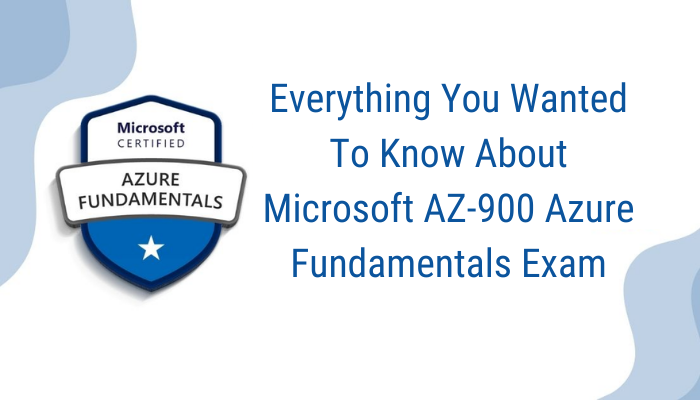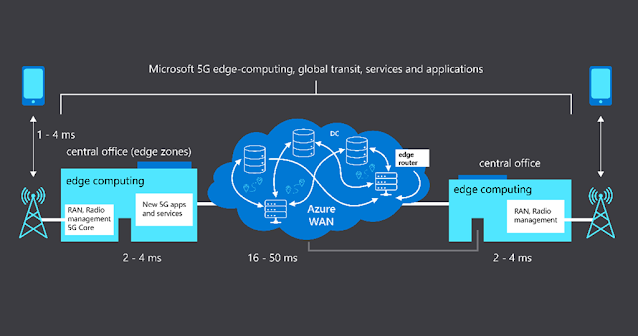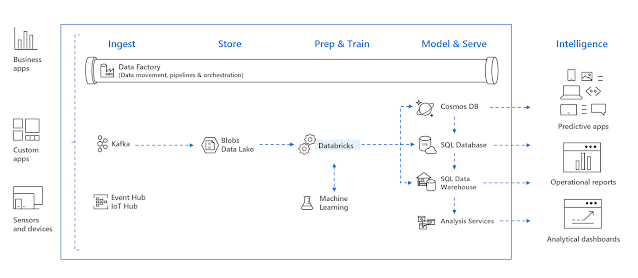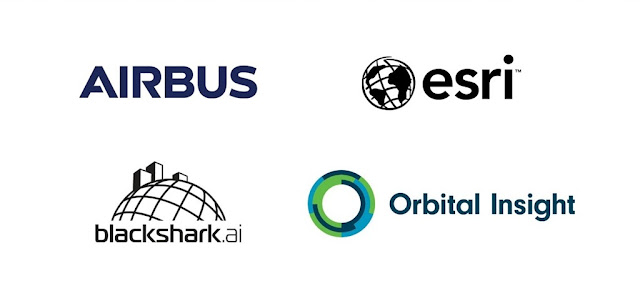All About Microsoft Azure Fundamentals AZ-900 Exam
In brief, the Microsoft Azure Fundamentals exam is the first Azure exam that aims to prove basic-level knowledge of the Microsoft Azure cloud.
When it comes to the structure of Microsoft exam AZ-900, it consists of around 40-60 questions. The time given to finish Microsoft Azure Fundamentals is 60 minutes. The AZ-900 exam questions types are multiple-choice, case study, active screen, best answer, mark review, short answer, drag & drop, hot area, and so on. To pass the exam, you have to obtain a score of 700 out of 1000. Microsoft Azure Fundamentals AZ-900 exam cost is $99.
Overview of the Microsoft AZ-900 Azure Fundamentals Exam
This Microsoft exam is designed for both technical and non-technical individuals. Having prevalent IT knowledge and practical experience will help you learn the Microsoft Azure Fundamentals syllabus topics smoothly. Passing this one Microsoft exam will give you the Microsoft Certified Azure Fundamentals certification.
The exam demands you to prove high-level knowledge of the Azure cloud and its different service offerings across four key domains:
- Understanding general cloud concepts (15-20%)
- Understanding core Azure services (30-35%)
- Understanding security, privacy, compliance, and trust (25-30%)
- Understanding Azure pricing and support (25-30%)
Breaking through the Microsoft Azure Fundamentals AZ-900 Exam
As a beginner’s exam, you will be measured with your fundamental knowledge of cloud concepts and different Azure services. Furthermore, this certification does not need any previous experience as a programming wizard, and however, you should have an idea of what you are up to.
Microsoft provides free learning resources to ensure that you pass the Microsoft Azure Fundamentals exam with a flying score. These include the essential information on the required topics. On top of that, instructors deliver courses that will help intensify your knowledge of the Azure Portal. But more than these free modules and training courses, what’s most crucial to have throughout your preparation is the AZ-900 practice test! AZ-900 practice test are your saving grace to complement your exam resources.
7 Ways AZ-900 Practice Test Can Help You Achieve Exam Success
There are multiple advantages of giving an AZ-900 practice test before the actual exam, and it helps you reinforce your Microsoft Azure Fundamentals exam preparation. In the long shot that you need more motivation to convince yourself why you should give a practice test before Microsoft Azure Fundamentals exam, keep on reading!
1. Helps in Identifying Weak Areas
AZ-900 practice tests are an ideal way to identify your weak areas. While you appear in a practice exam, you run over definite AZ-900 exam questions you don't have a hint about the answer for. These AZ-900 exam topics are your weak points. You can write down these points and focus on the corresponding, so you have to work upon exam topics when you sit in the genuine exam.
2. Helps in Practice and Preparation
Practice makes an individual perfect! A similar saying spreads all over. The more you take the AZ-900 practice test, the more chances you should pass with a flying score. A practice test comprises questions like the genuine AZ-900 exam. Giving multiple AZ-900 practice tests will help you practice such inquiries and become an equivalent expert.
3. Boost Your Confidence to face challenges and AZ-900 Exam
AZ-900 practice test helps you explore various methods that you apply while you sit for the Microsoft Azure Fundamentals exam and choose which one fits you the best.
4. Helps you in Improving Your Score
Practicing AZ-900 practice tests multiple times will help you improve your actual exam score. The more practice questions you answer, the more experience you will acquire in managing such, and this will, therefore, help you enhance your score.
5. Improves Time Management Skills
When you answer many AZ-900 exam practice questions, your exam-taking and time management skills will improve. By taking the AZ-900 practice test, again and again, your brain will get used to dealing with them, and you won't set aside much effort to answer.
Giving a lot of AZ-900 practice tests will help you foster your strategy to address the difficulty. You can try different things with multiple approaches to tackle the exam and see which one works the best for you.
7. Gives Space for Self-Assessment
You become acquainted with your outcome after each counterfeit test, which furnishes you with a chance to self-assess—correcting your missteps after each mock test assists you with accomplishing the best form of yourself to introduce in the AZ-900 exam. The applicants can receive scores after each practice test. Toward the month's end, examining this score can help you keep tabs on your development and know in what segments have you performed well and what areas require more exertion.
Conclusion
Cloud computing is a sought-after skill that can be mastered with constant effort and patience. By passing the Microsoft Azure Fundamentals AZ-900 exam, you don’t just earn the coveted Microsoft Certified: Azure Fundamentals certification but also get proof of a brighter IT career. All you require is to study smart and use practice tests and relevant study materials such as training courses and study guides!

































